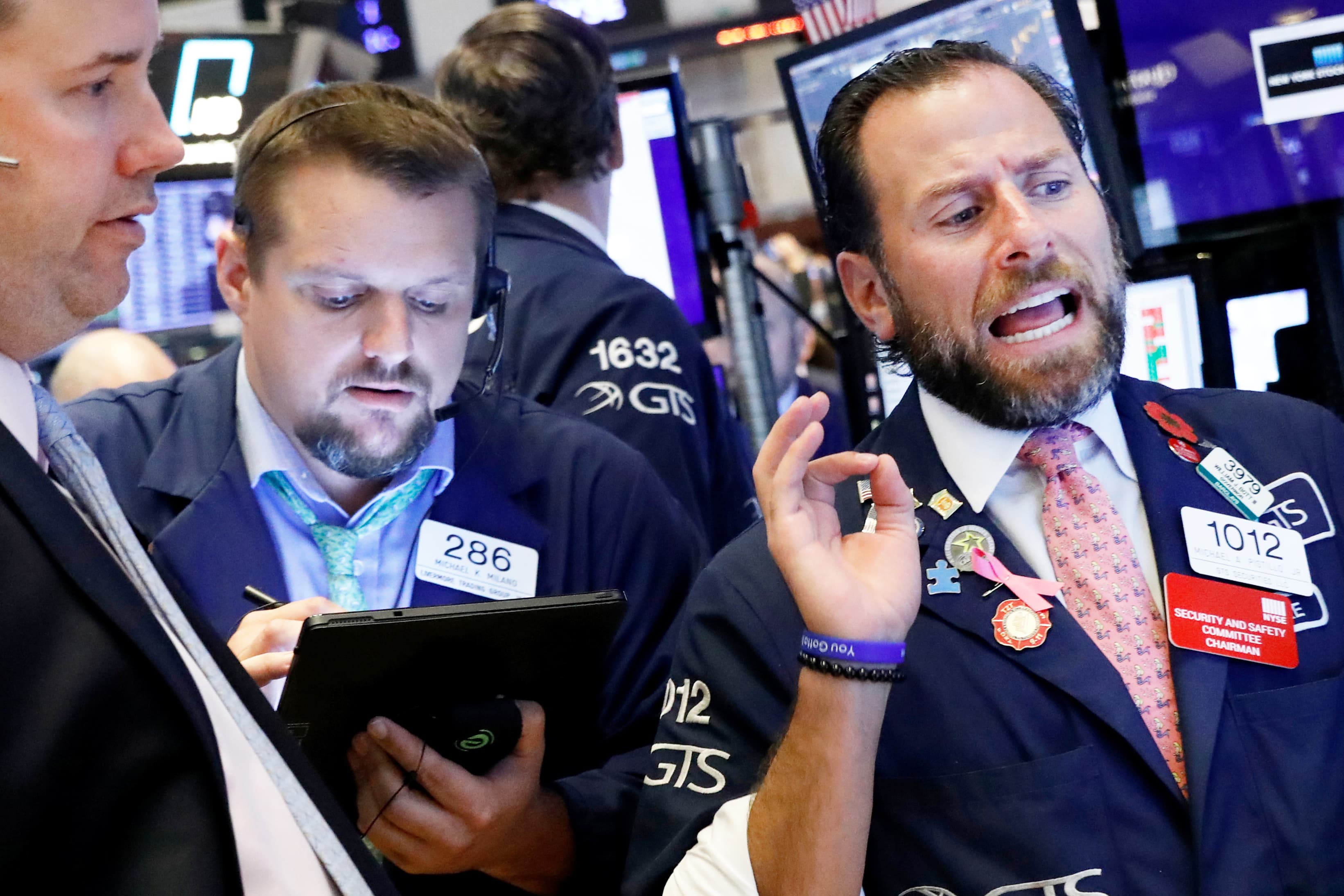Traders work on the floor at the New York Stock Exchange.
Brendan McDermid | Reuters
With trade tensions toned down, stocks have clearance to rally into year-end, a traditionally positive time for stocks.
Stocks surged to record highs in the past week, as the U.S. and China moved to announce a phase one trade deal that halts tariffs that were set to go into effect Sunday. Stocks gave up some of their best gains Friday, in a sell-the-news move after U.S. and Chinese officials announced the agreement.
“Three big geopolitical things are taken off the table — USMCA, phase one and Brexit, and even though we might not like or be fulfilled by phase one, these uncertainties are behind us,” said Sam Stovall, chief investment strategist at CFRA.
Earlier in the week, the House had approved the USMCA, a revised version of the North American Free Trade Agreement. On Thursday, British voters handed the Conservative party a strong victory, meaning there should be no gridlock as Prime Minister Boris Johnson pushes through Brexit, the U.K.’s planned exit from the European Union.
“We’re getting a running start on the Santa Claus rally,” said Stovall. Stovall said historically stocks often hit the low of the month in mid-December, before rallying into the rest of the year.
The S&P 500 was up less than a point on Friday, but ended the week with a gain of 0.7% at 3,168. The Dow ended the day up just 3 points, at 28,135, but ended the week with a gain of 0.4%. The Dow is up about 20% for the year so far while the S&P is up 26.4% for the year.
The trade deal was met by some skepticism as investors hoped to see more details. The market will continue assessing the deal in the coming week.
“Phase 1 is less ambitious than recent reporting, but modestly beat our below consensus expectations by partially reducing September tariffs. Yet ambiguity on key issues suggests execution risk remains for 2020, meaning this ‘uncertain progress’ is not yet a ‘game changer’ for our outlook.,” wrote Michael Zezas, Morgan Stanley policy analyst.
There was some disappointment that more tariffs weren’t rolled back, which would have been a bigger plus for corporate earnings and the economy. Goldman Sachs economists said they expected a 20% rollback in tariffs, but the reduction of tariffs on $120 billion in goods to 7.5% amounted to just 10%.
“While the smaller tariff rollback is slightly negative relative to our expectations, we note that the most important aspect of the agreement—assuming it is finalized—is that US tariffs are now set to decrease, marking a sharp turn from the US stance over the last two years,” the economists noted.
Liz Ann Sonders, Charles Schwab chief investment strategist, said a trade deal would be a slight positive as it had been largely priced into the market, but if talks had unraveled without an agreement, a new wave of tariffs would have been very negative for stocks.
Sonders said she remains focused on U.S. large caps over small caps, and expects the market to have a positive year in 2020.
“I don’t think it will be a steady, boring end-the-year-up-6% with no drama,” said Sonders. “I think the drama will not be just driven by trade but increasingly by the election.” She said small caps are caught up in the value trade and appear to be breaking out because of it, but they haven’t yet proven themselves on a fundamental basis.
Sonders said it’s important that the weakness in manufacturing does not spill into services, and she’s watching the jobs market for clues. “I do think the labor market really holds the key of whether we see this manufacturing weakness morph more broadly into the economy,” she said. “If not, I think we’re okay for next year.”
She said the market will have to see earnings growth next year. “It does not mean a gangbuster year for the market. Probably with decent swings around it like we’ve had in the last year and a half,” she said.
What to watch
There are a few important economic reports in the week ahead, with PMI data on Monday on the service sector and manufacturing. There is industrial production Tuesday, and personal income and spending is Friday. Consumer sentiment could be important on Friday.
Clearly, traders will be watching the jobless claims Thursday to see if it remains elevated after a two-year high reported in the past week. Claims are seen as an early warning for the jobs market, which so far looks strong. Economists said seasonal factors around Thanksgiving may have impacted the weekly claims data.
Week ahead calendar
Monday
8:30 a.m. Empire State manufacturing
9:45 a.m. Manufacturing PMI
9:45 a.m. Services PMI
10:00 a.m. NAHB survey
4:00 p.m. TIC data
Tuesday
8:00 a.m. Dallas Fed President Robert Kaplan
8:30 a.m. Housing starts
8:30 a.m. Business leaders
9:15 a.m. Industrial production
10:00 a.m. JOLTS
12:30 p.m. New York Fed President John Williams
1:00 p.m. Boston Fed President Eric Rosengren
Wednesday
12:40 p.m. Chicago Fed President Charles Evans
Thursday
8:30 a.m. Initial claims
8:30 a.m. Philadelphia Fed survey
8:30 a.m. Current account
10:00 a.m. Existing homes
Friday
8:30 a.m. Q3 GDP (third reading)
10:00 a.m. Personal income
10:00 a.m. Consumer sentiment
